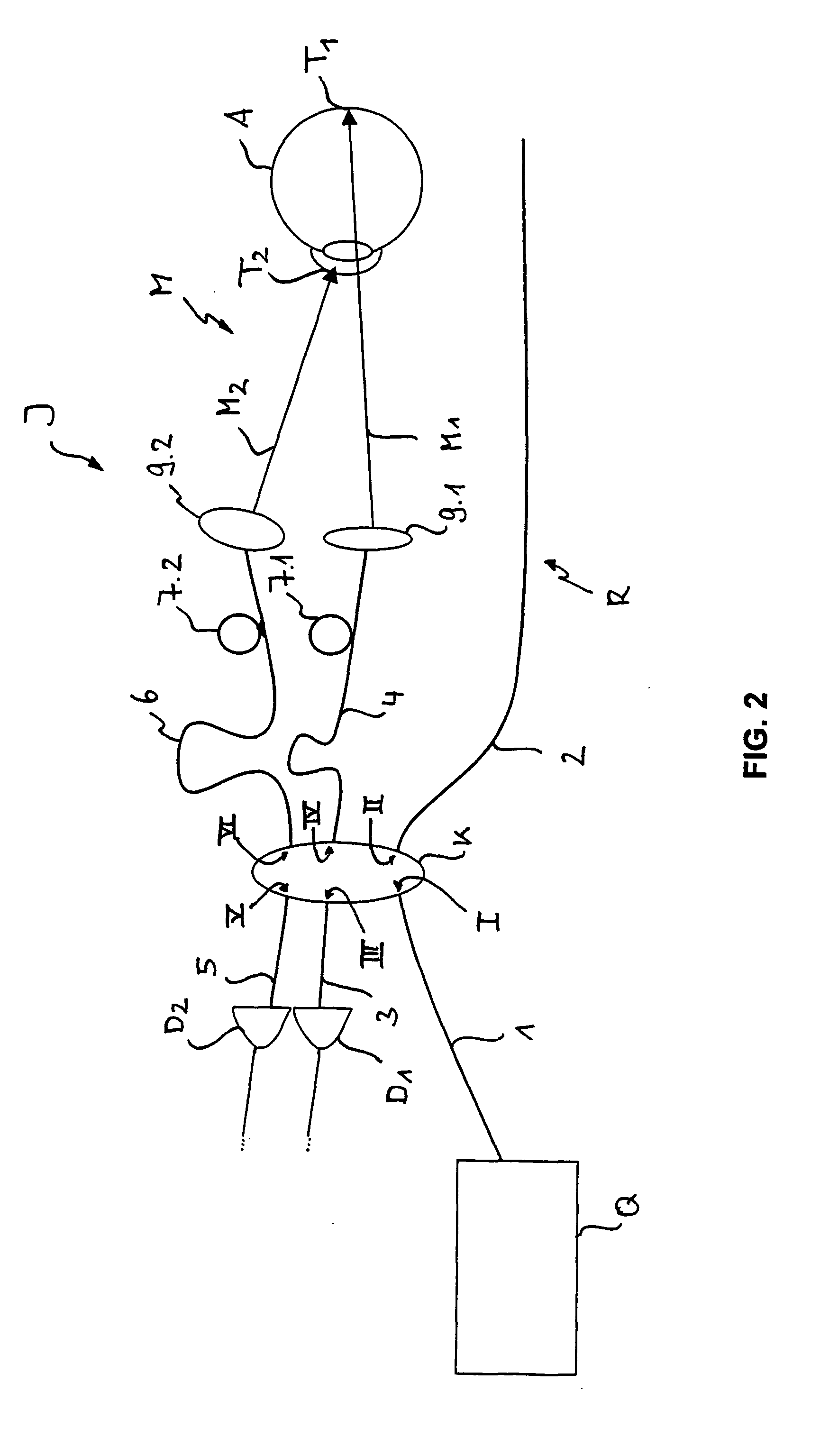Short coherence interferometer
a coherence interferometer and short technology, applied in the field of short coherence interferometer apparatus, can solve the problems of multiple different axially spaced regions, difficult to distinguish optical coherence tomography, etc., and achieve the effects of preventing interactions between multiple strong reference signals, high signal sensitivity, and advantageous structural simplification
- Summary
- Abstract
- Description
- Claims
- Application Information
AI Technical Summary
Benefits of technology
Problems solved by technology
Method used
Image
Examples
Embodiment Construction
[0066]FIG. 1 schematically shows an interferometer for SS OCDR. Radiation from a beam source Q, which is swept and has a line width of less than 30 pm, for example, preferably ≦26 pm or in another embodiment preferably 1and T2 on a specimen P, which is an eye A in the example embodiment. Instead of an eye, of course, any arbitrary, non-biological technical structure may also be detected using the interferometer I, because the interferometer I generally detects the location and scattering intensity of scattering centers which are in the subregions T1 and T2. Insofar as the present description thus makes reference to the application on an eye A, this is purely exemplary and is not to be understood as restrictive.
[0067]The subregions T1 and T2 are shown as points in FIGS. 1 and 2. This is only used for a better overview. Due to the sweeping of the radiation source Q, the subregions extend over a range which extends along the axis of incidence of the radiation, of course. However, the m...
PUM
 Login to View More
Login to View More Abstract
Description
Claims
Application Information
 Login to View More
Login to View More - R&D
- Intellectual Property
- Life Sciences
- Materials
- Tech Scout
- Unparalleled Data Quality
- Higher Quality Content
- 60% Fewer Hallucinations
Browse by: Latest US Patents, China's latest patents, Technical Efficacy Thesaurus, Application Domain, Technology Topic, Popular Technical Reports.
© 2025 PatSnap. All rights reserved.Legal|Privacy policy|Modern Slavery Act Transparency Statement|Sitemap|About US| Contact US: help@patsnap.com



